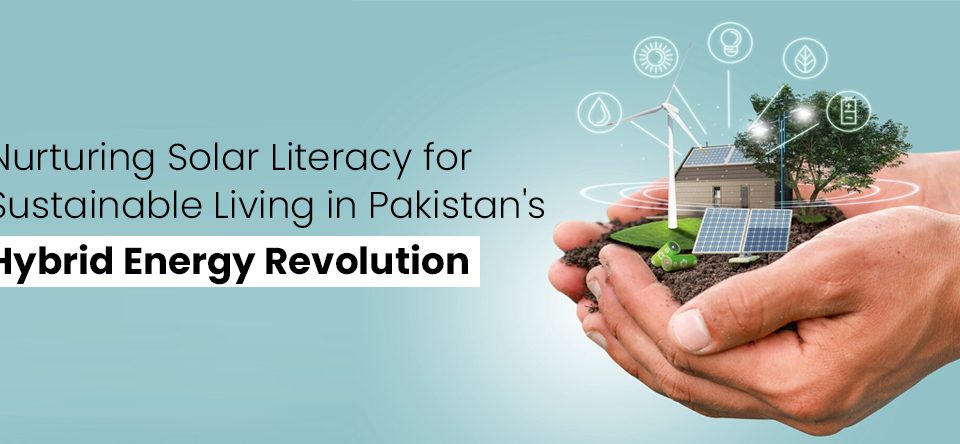
Solar Inverters: Tackling Pakistan’s Energy Crisis
April 11, 2023
How Solar Panels Can Help You Beat the Heat This Summer
April 27, 2023Meta Title: Solar Power: The Ultimate Resilience Tool against Natural Disasters
Meta Description: Unlock the power of the sun with solar energy! Shield yourself from natural disasters and keep your lights on with Solar Power – the ultimate resilience tool. Learn more now
Solar Power: The Ultimate Resilience Tool against Natural Disasters
Natural disasters can strike at any time and have devastating impacts on communities. These events can cause widespread power outages and disrupt essential services, leaving communities vulnerable to further harm. Resilience is crucial in the face of natural disasters, and solar power can be a game-changer in disaster preparedness. In this article, we will explore the role of solar energy in disaster resilience and its applications in disaster management.
Natural disasters are events caused by natural phenomena that have the potential to cause significant damage and loss of life. These events can take many forms, including hurricanes, tornadoes, earthquakes, wildfires, and floods. Natural disasters can severely impact communities, disrupting essential services such as electricity, water, and communication. The aftermath of these events can also cause economic and social costs, which can take years to recover from.
Resilience is essential in the face of natural disasters, and communities need to be prepared to minimize the impact of these events. One tool that can aid in disaster preparedness is solar energy. In this article, we will explore the role of solar energy in disaster resilience and how it can help communities prepare for natural disasters.
Natural Disasters and Their Impact
Natural disasters can cause significant damage and loss of life. These events can disrupt essential services like electricity, water, and communication. Natural disasters can also have economic and social costs, which can take years to recover. For example, Sindh flood in august 2023 displaced over one million people.
Solar Energy and Disaster Resilience
Solar energy can help communities prepare for natural disasters by providing a reliable source of electricity. Solar energy is a renewable source of energy that can be harnessed from the sun, even during a natural disaster. Unlike traditional power grids, solar energy systems are not vulnerable to the same disruptions that can occur during a natural disaster.
In addition to providing a reliable source of electricity, solar power can also be used in conjunction with energy storage to increase resilience. Energy storage systems, such as batteries, can store excess solar energy during times of plenty and release it during times of need. This combination of solar power and energy storage can provide communities with a reliable and resilient source of electricity during a natural disaster.
Applications of Solar Energy in Disaster Management
Solar-powered water filtration systems are one application of solar energy in disaster management. These systems can provide clean drinking water to communities during a natural disaster when traditional water systems are disrupted.
Solar panels can also power emergency communication systems like cell phones. These systems can provide communities with critical information during a natural disaster.
During a power outage, solar batteries can power essential medical equipment, such as ventilators and oxygen concentrators. This can be life-saving in situations where traditional power sources are unavailable.
Solar Energy Policy and Disaster Resilience
The government has a role in promoting solar energy for disaster resilience. Current policies and regulations on solar energy vary by state and country. In some areas, incentives such as tax credits and rebates are available to individuals and businesses that invest in solar energy. However, more needs to be done to promote solar energy adoption for disaster resilience.
Policy reform is necessary to promote the adoption of solar energy for disaster resilience. Governments should invest in research and development to reduce the cost of solar energy systems. In addition, regulations should be put in place to require new buildings to include solar energy systems as part of their design.
Challenges to Solar Energy Adoption for Disaster Resilience
There are several barriers to the adoption of solar energy for disaster resilience. Economic and financial barriers are one of the primary challenges. Solar energy systems can be expensive to install, and many communities may need more financial resources to invest in these systems.
Technological barriers can also be a challenge. In some areas, solar energy systems may not be compatible with the existing infrastructure, making integrating them into the power grid challenging.
Sociocultural barriers can also hinder the adoption of solar energy for disaster resilience. Some communities may resist change or need help understanding the benefits of solar energy systems. Education and outreach programs can help address these barriers.
Future innovations in solar energy for disaster resilience
Future innovations in solar energy are likely to further enhance disaster resilience. For example, advancements in solar panel technology could make these systems more efficient and cost-effective, making them more accessible to communities with limited resources.
Additionally, the integration of artificial intelligence (AI) and machine learning (ML) into solar energy systems could improve their performance and increase their reliability. This technology could help optimize energy storage and distribution during a natural disaster, ensuring that communities have access to reliable and resilient sources of electricity.
Overall, the future of solar energy for disaster resilience looks bright, with continued advancements in technology and policy likely to make these systems more accessible and effective in the face of natural disasters.
Wrapping it up
Solar power is an ultimate resilience tool against natural disasters. It can help communities prepare for these events by providing a reliable source of electricity, even during a power outage. Solar energy can also be used with energy storage to increase resilience. Solar energy applications in disaster management include:
- Solar-powered water filtration systems.
- Solar panels for emergency communication systems.
- Solar batteries for essential medical equipment.
Governments have a role in promoting solar energy adoption for disaster resilience by investing in research and development, driving down the cost of solar energy systems, and putting regulations in place to require new buildings to include solar energy systems.
There are challenges to adopting solar energy for disaster resilience, including economic, financial, technological, and sociocultural barriers. Education and outreach programs can address these barriers and promote the adoption of solar energy for disaster resilience.




